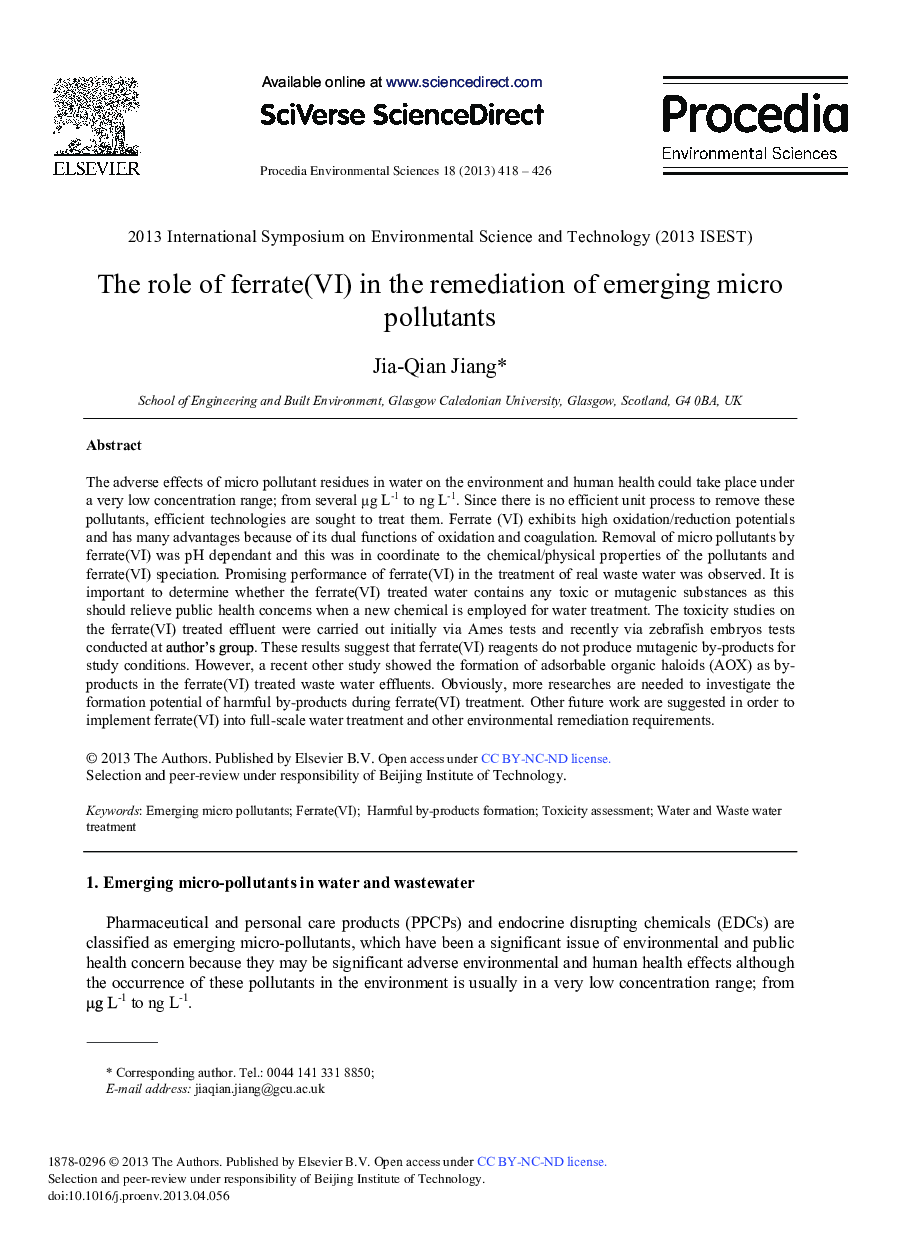| کد مقاله | کد نشریه | سال انتشار | مقاله انگلیسی | نسخه تمام متن |
|---|---|---|---|---|
| 4402990 | 1618626 | 2013 | 9 صفحه PDF | دانلود رایگان |

The adverse effects of micro pollutant residues in water on the environment and human health could take place under a very low concentration range; from several μg L-1 to ng L-1. Since there is no efficient unit process to remove these pollutants, efficient technologies are sought to treat them. Ferrate (VI) exhibits high oxidation/reduction potentials and has many advantages because of its dual functions of oxidation and coagulation. Removal of micro pollutants by ferrate(VI) was pH dependant and this was in coordinate to the chemical/physical properties of the pollutants and ferrate(VI) speciation. Promising performance of ferrate(VI) in the treatment of real waste water was observed. It is important to determine whether the ferrate(VI) treated water contains any toxic or mutagenic substances as this should relieve public health concerns when a new chemical is employed for water treatment. The toxicity studies on the ferrate(VI) treated effluent were carried out initially via Ames tests and recently via zebrafish embryos tests conducted at author's group. These results suggest that ferrate(VI) reagents do not produce mutagenic by-products for study conditions. However, a recent other study showed the formation of adsorbable organic haloids (AOX) as by- products in the ferrate(VI) treated waste water effluents. Obviously, more researches are needed to investigate the formation potential of harmful by-products during ferrate(VI) treatment. Other future work are suggested in order to implement ferrate(VI) into full-scale water treatment and other environmental remediation requirements.
Journal: Procedia Environmental Sciences - Volume 18, 2013, Pages 418-426